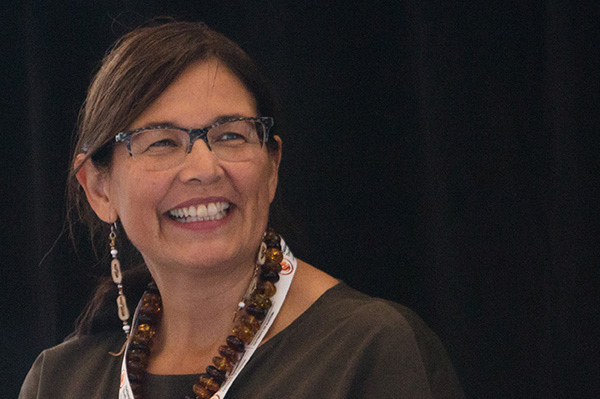It doesn’t take Doug Cuthand long to write 700 words—when it’s time for him to put together his weekly column, he gets up at 5:30 a.m. and writes it in an hour.
He used to wonder how he would fill the space every week, but now he’s realized, “There’s actually more out there than you can write.”
Cuthand has been writing columns for the Saskatoon StarPhoenix and the Regina Leader-Post for 25 years. If you do the math, and he does, that’s around 1,200 columns.
Cuthand lives in Saskatoon but is from Little Pine First Nation in the Battleford area. His one-line bio for the papers emphasizes his Indigenous perspective, a perspective that wasn’t a strong component when he started.
He was “a pioneer in providing that gateway for the Aboriginal perspective to be brought into the mainstream media,” said Trevor Sutter, Cuthand’s editor at the Leader-Post in the ‘90s.
Sutter says that before Cuthand’s columns, “That perspective only showed up in either police reporting, court reporting or social issues.”
Cuthand has been an influence in Indigenous media for decades. After working at the Alberta Native Communications Society in Edmonton, he became editor of Saskatchewan Indian magazine, a publication connected to the Saskatchewan Federation of Indians (now the Federation of Sovereign Indigenous Nations). Then he became a vice-chief for the federation for five years in the late ‘70s and early ‘80s.
Because of Cuthand’s experience in politics, he has regularly criticized politicians and governments, both Indigenous and non-Indigenous, in his columns.
During the controversial Pamela George murder case of 1996, Cuthand was very critical. George was killed by two white, male high-school students outside of Regina, out of what some argued was racial hatred.
Judge Ted Malone made a comment to the jury about her being a sex worker, which caused an uproar, one Cuthand was part of.
Critical of Malone, he wrote in his Jan. 3, 1997 column: “The victim was placed on trial and the two killers were made to appear like some good old boys out for a good old time.”
While Cuthand writes about injustice—the killing of Colten Boushie is a more recent example—he said his goal is to educate non-Indigenous people about the longer narrative of Indigenous peoples, of what’s happened over decades, even centuries.
“The daily headline is simply a chronicle of events of that particular time,” he said. “(When) you come to an issue we have to go right back and look at…when our people lived on the land and when they went to boarding schools. It all kind of builds up into where we are today.”
This is why Cuthand wrote about the treaty agreements with the Crown when then-premier Roy Romanow asked the federal government to hand responsibility for Aboriginal health care to the provinces in 2002. It’s why he brought up Indigenous peoples’ historic ability to store fat during winter months, in a column about the diabetes epidemic among First Nations.
“I want understanding,” he said. “I want a human face put on Indian people.”
Along with promoting community in his writing, Cuthand has also been supported by people who read his columns. When his son passed away in 2006, he wrote about it days after it happened.
“I couldn’t talk,” he said. “The way I could actually do anything was through the keyboard. That’s where my thoughts came out and so I did.”
Cuthand received calls from people he didn’t know that were very helpful at the time.
“The interesting thing I discovered was that my wife and I now belong to a very exclusive club—in Indian Country there are an awful lot of parents who have lost their child in one way or the other.”
Cuthand wants to bring people together. His neighbours in Saskatoon are a mix of folks from different countries, such as Pakistan and Zimbabwe. He and his wife get together with them for meals. As a result, he’s learned about Ramadan and other traditions.
“Once you get to know someone, they become a friend,” he said. “They take on a different glow altogether. It’s just the way it should be.”
Follow on Twitter @kdokesawatzky















